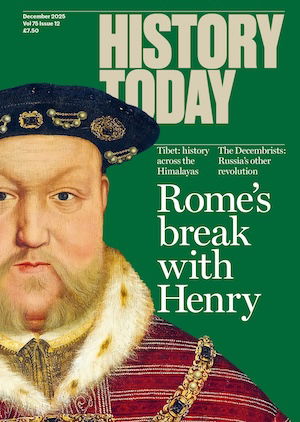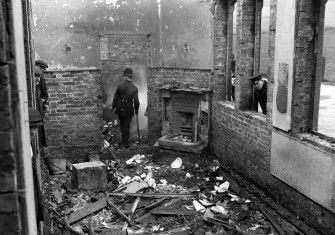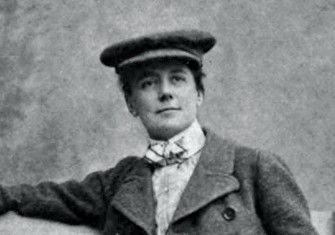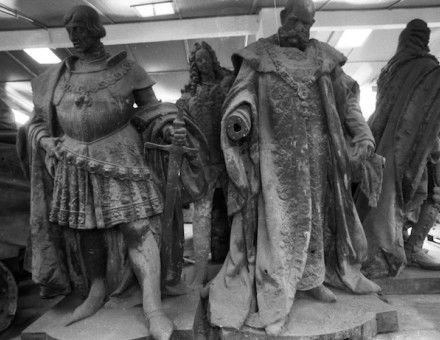Emily Wilding Davison: The Good Terrorist
The motives behind Emily Wilding Davison’s fateful actions at the Epsom Derby are still debated – and so is their impact on the Suffragette movement.
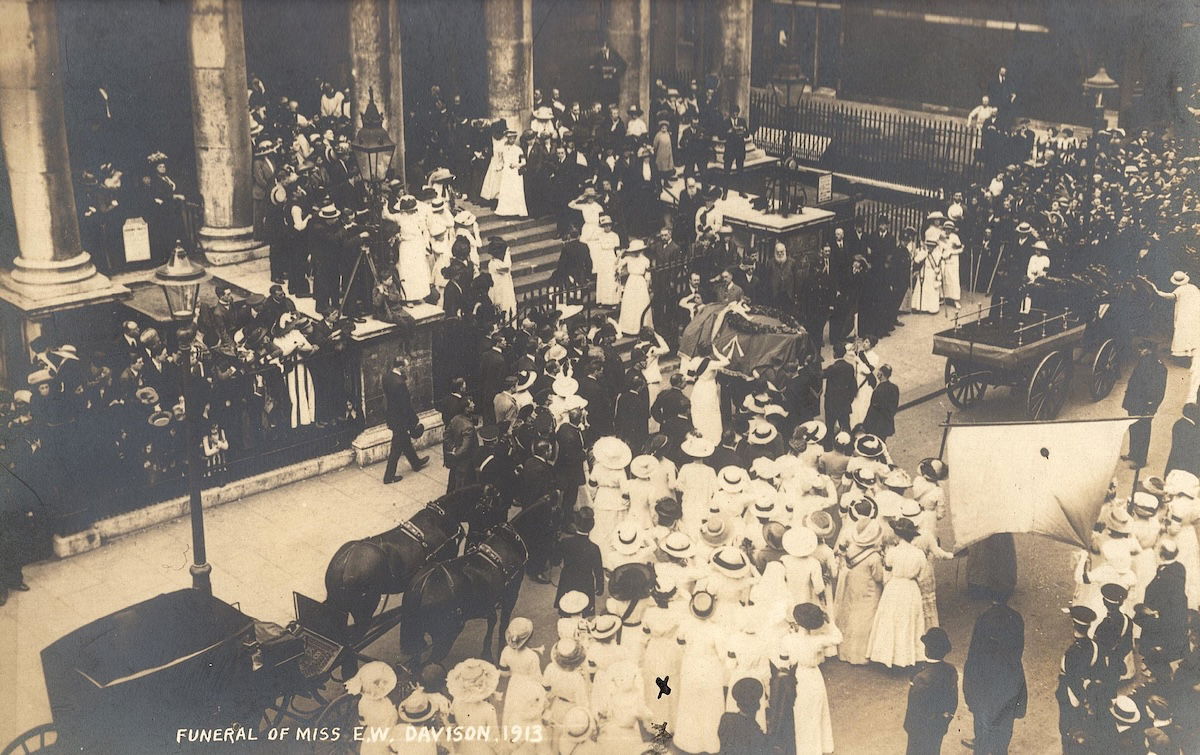
A century after Emily Wilding Davison’s dramatic death at the Epsom Derby in June 1913 aspects of this incident remain uncertain. Did she intend to commit suicide? Was she acting as part of a wider suffragette plan? And what impact did her dramatic intervention have on the wider cause?
Until 1906 Davison had worked as a teacher and governess, but at that point, provoked by the continual prevarication of the politicians over women’s enfranchisement, she adopted the militant tactics of the Women’s Social and Political Union (WSPU). However, though the fast-developing campaign offered plenty of scope for a brave, imaginative woman, she appears to have operated as a freelance suffragette. Though she participated in several well-known events, her actions from 1909 onwards seem increasingly to have been at her own initiative. This made sense in view of police efforts to prevent suffragette sallies, the fewer people who knew what was intended the better. But there was a downside.
At this time Davison had no regular income, relying on occasional fees from journalism and help from relatives. Significantly she was not employed by the WSPU, although it had 75 paid staff by 1909 and 110 by 1911 as funds increased. The reason for this is clear. Although Emmeline and Christabel Pankhurst ran the organisation in a highly autocratic way – they promptly sacked any staff who deviated from the approved strategy even at a local level – they found it easier to manage the personnel than to control the methods. For example, the famous suffragette hunger strikes by members in prison began entirely on the initiative of Marion Wallace-Dunlop in July 1909 and were subsequently accepted by the leadership; the boycott of the Census in 1911 was initially disapproved of by the Pankhursts but then approved because so many members wanted to participate. The WPSU endured a succession of splits and expulsions, the best known involving Charlotte Despard in 1907, the Pethick-Lawrences in 1912 and Sylvia Pankhurst in 1913. Consequently, from the Pankhurst’s perspective someone like Davison was simply trouble.
However, Davison’s detachment from the formal organisation complicates the task of explaining her motives. In her 1953 account, Laugh a Defiance, another suffragette, Mary Richardson, claimed to have been an eye witness at the Derby and a close ally: ‘She knew that death was galloping towards her’, she wrote; yet it is now generally accepted that Davison went to Epsom alone and that Richardson was not present but simply tried to enliven a dull memoir.
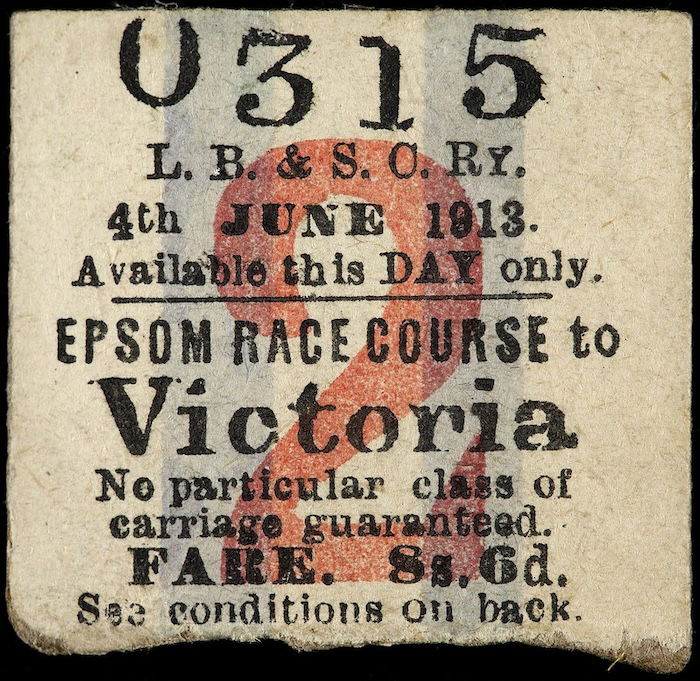
As a result no contemporary really knew whether Davison intended suicide. The evidence is inconclusive. One can hardly deduce from her decision to make a will in 1911 that she was contemplating death. Admittedly on two occasions she had thrown herself over the railings in Holloway prison (which were designed to prevent suicides) and she is on record as telling the prison doctor in June 1912 that ‘a tragedy is wanted’. But what did that mean? Contemporary medical pre-judice commonly regarded women, and suffragettes in particular, as prone to hysteria and thus as suicidal.
In fact Davison was an intelligent and calculating person who understood that by 1913 the militant suffragettes and the Home Secretary, Reginald McKenna, were engaged in a struggle for public opinion. The authorities wanted to suppress the campaign by imprisonment and force-feeding but without risking the death of a suffragette in prison – hence the resort to release for ill-health followed by re-arrest under the ‘Cat and Mouse’ Act. WSPU propaganda countered this by conveying the impression that while in prison Emmeline Pankhurst was, if not dead, close to it. Davison hoped to discredit McKenna’s strategy by undertaking acts that undoubtedly entailed the risk of serious injury, but this is not to say she intended to commit suicide; she had bought a return ticket to Epsom.
After her death the leaders of the WSPU found themselves facing an unexpected development and had to improvise, especially as Christabel was exiled in Paris and Emmeline in and out of prison. Grace Roe organised a spectacular funeral procession on June 14th that stretched from Victoria to King’s Cross, taking in a service at St George’s Church, Bloomsbury. The young rowdies who usually turned up to heckle suffragette events were apparently subdued by the tactic of carrying a large cross at the front of the procession. Observers in Hyde Park noticed that many removed their hats when the cortege arrived.
However, the procession was too long to control and the popular reactions were clearly more complicated. Emily Davison was, after all, not the only casualty of Derby Day. Another suffragette, Maud Arncliffe-Sennett, was shocked to hear the crowds shouting ‘The King’s ‘orse!’. The unfortunate Anmer had had to be put down as a result of his injuries and, although one should not exaggerate the English sentimentality towards animals, it can’ t be ignored. Moreover, although Davison had not targeted Anmer, some people took her intervention as an insult to the king. Finally, though Anmer was not likely to have won the race, those who had placed bets on the royal runner found it tempting to blame their disappointment on this suffragette outrage.
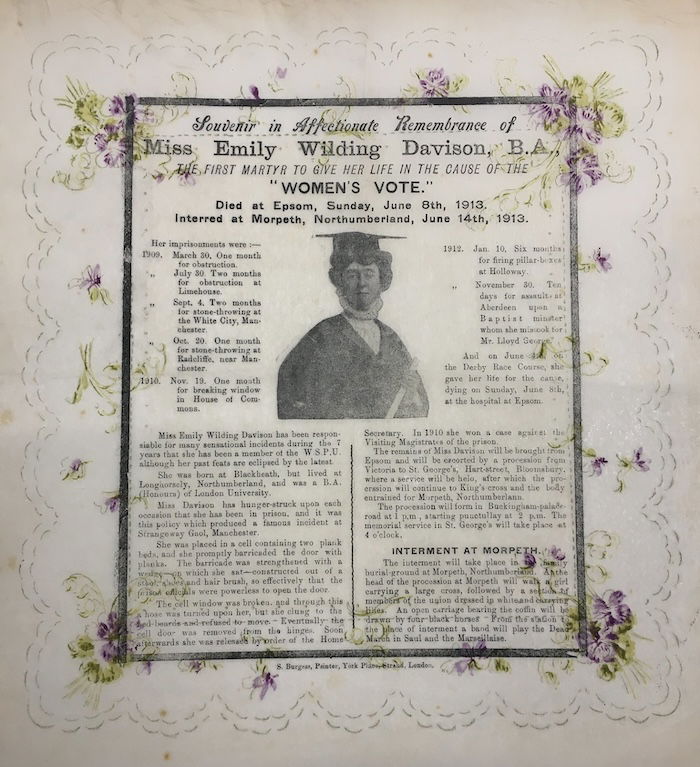
These mixed reactions make sense in the wider context of rising popular hostility to the suffragettes in 1912-14. Even the Labour Party leaders and non-militant women suffragists, including Helena Swanwick and Mary Stocks, were denouncing suffragette martyrdom as a contrived and dishonest policy by women who, they felt, should be prepared to accept their punishment for acts of violence. The Daily Sketch, while recognising Davison’s bravery, insisted that society could not yield to what it described as a form of terrorism. The government did nothing to change its policy of suppressing the WSPU after Derby Day; indeed, it continued to raid its headquarters, tap its telephones, intercept its mail and seize copies of its newspaper and by 1914 was on the verge of prosecuting the WSPU’s financial backers. It actually re-arrested Emmeline Pankhurst while she was en route to Davison’s funeral. This reflected the politicians’ confidence that they could get away with illiberal methods because militancy had alienated public opinion; this view is borne out by the way the crowds routinely attacked any suffragettes who appeared in public, so much so that they had to be protected from violence by the police.
Official calculations are also corroborated by the private correspondence among the suffragettes themselves, several of whom complained to Christabel Pankhurst that the organisation had disintegrated and the ablest members had quit while she was in Paris. Although Christabel and Emmeline did their best to capitalise on Davison’s tragic death, her heroic action came as further evidence of the dangers of independent, uncoordinated initiatives and doubtless reinforced their determination to change course after the outbreak of war a year later.

